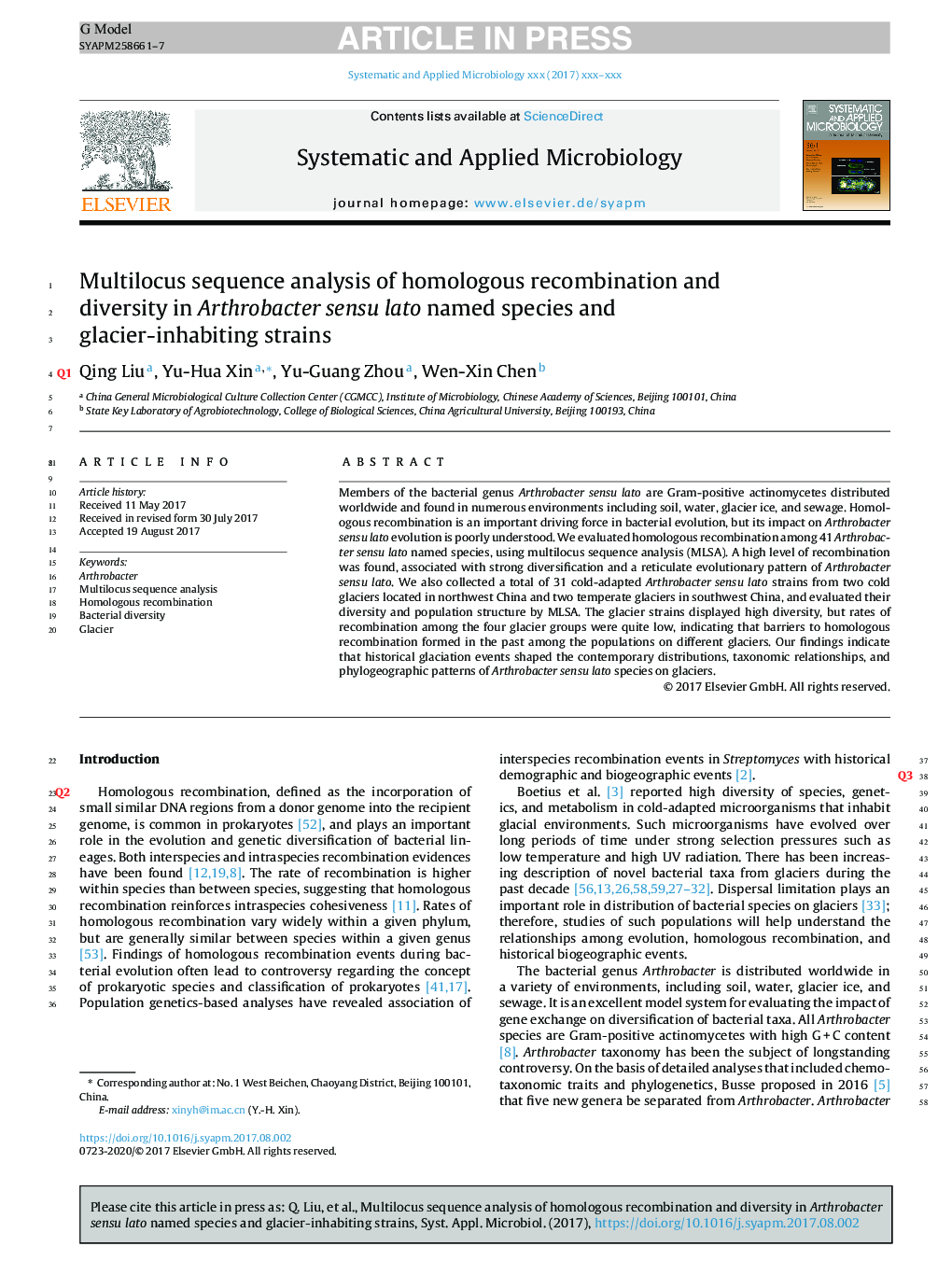| Article ID | Journal | Published Year | Pages | File Type |
|---|---|---|---|---|
| 8393522 | Systematic and Applied Microbiology | 2018 | 7 Pages |
Abstract
Members of the bacterial genus Arthrobacter sensu lato are Gram-positive actinomycetes distributed worldwide and found in numerous environments including soil, water, glacier ice, and sewage. Homologous recombination is an important driving force in bacterial evolution, but its impact on Arthrobacter sensu lato evolution is poorly understood. We evaluated homologous recombination among 41 Arthrobacter sensu lato named species, using multilocus sequence analysis (MLSA). A high level of recombination was found, associated with strong diversification and a reticulate evolutionary pattern of Arthrobacter sensu lato. We also collected a total of 31 cold-adapted Arthrobacter sensu lato strains from two cold glaciers located in northwest China and two temperate glaciers in southwest China, and evaluated their diversity and population structure by MLSA. The glacier strains displayed high diversity, but rates of recombination among the four glacier groups were quite low, indicating that barriers to homologous recombination formed in the past among the populations on different glaciers. Our findings indicate that historical glaciation events shaped the contemporary distributions, taxonomic relationships, and phylogeographic patterns of Arthrobacter sensu lato species on glaciers.
Related Topics
Life Sciences
Agricultural and Biological Sciences
Ecology, Evolution, Behavior and Systematics
Authors
Qing Liu, Yu-Hua Xin, Yu-Guang Zhou, Wen-Xin Chen,
